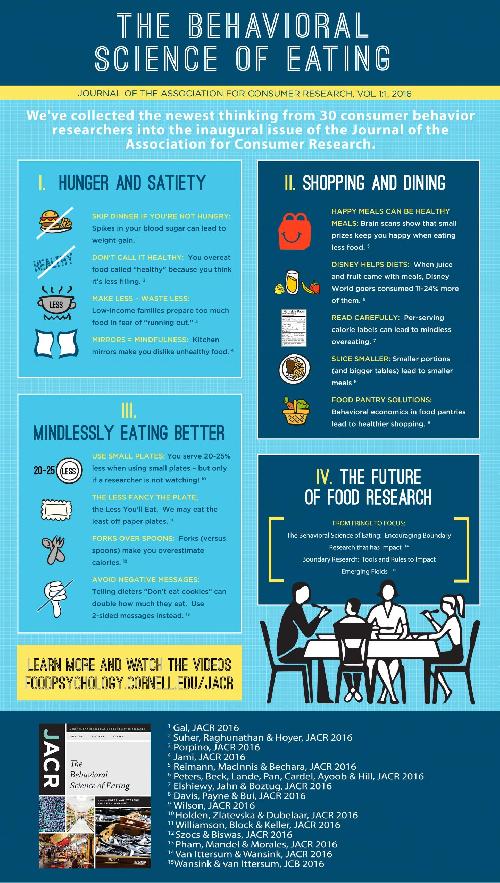We have all seen messages from the "food police" telling us that sugary snacks are bad. But is it possible that seeing these messages actually make us more likely to eat sugary snacks? Researchers at Arizona State University, Nguyen Pham, Naomi Mandel, and Andrea Morales, show, in new research published in the Journal of the Association for Consumer Research, that these messages backfire among dieters. They find that dieters ate 39% more cookies after seeing a "food police" style message that says, "All sugary snacks are bad" than those who saw a positive message."
The researchers conducted three studies to demonstrate that negative one-sided messages about food can lead to backfire effects. In the first study, 380 participants read a positive, negative, or neutral message about dessert. Dieters who saw the negative message had more positive thoughts about unhealthy foods, but non-dieters did not show any difference. Moreover, thoughts about healthy foods or non-food words were unaffected by the messages. "What these results show us," Pham explains, "is that rather than leading dieters to make healthier choices, these food police messages are actually making unhealthy foods even more enticing to dieters."
In the second study, 397 participants read a one-sided positive or negative about sugary snacks and then watched a short video while eating chocolate-chip cookies. Dieters who saw the negative message consumed 39% more cookies than dieters who saw the positive message. As in the first study, non-dieters were unaffected by the messages about food.
 These are findings published in the inaugural issue of the Journal of the Association for Consumer Research. Credit: Brian Wansink
These are findings published in the inaugural issue of the Journal of the Association for Consumer Research. Credit: Brian Wansink
The third study focused on snack choice and examined how reactions to two-sided messages, which contain both positive and negative information about food, might reduce the backfire effects. Among 324 participants, dieters who saw the negative message chose 30% more unhealthy snacks than dieters who saw the positive message, while dieters who saw the two-sided message chose 47% fewer unhealthy snacks than those who saw the negative message.
In an attempt to reverse the obesity epidemic in the U.S., the government and its agencies are increasing their use of public service announcements (PSAs) to try and provide useful information to consumers about the dangers of unhealthy eating. However, this new research shows that there is a real danger in using messages that convey only negative information about food. Mandel warns, "Our work shows that negative messages about unhealthy food will backfire among dieters. If you want to change what they eat, a more even-handed message that contains both positive and negative information is the way to go."
source: Cornell Food & Brand Lab